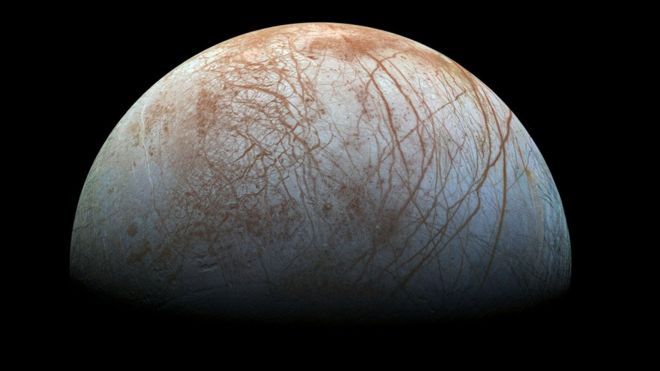ramonmercado
CyberPunk
- Joined
- Aug 19, 2003
- Messages
- 58,255
- Location
- Eblana
The huge rocket NASA is developing to get astronauts to an asteroid, Mars and other distant destinations should also greatly aid robotic exploration efforts, members of Congress were told Tuesday (July 28). ...
As an example, Grunsfeld cited NASA's planned flyby mission to Jupiter's ocean-harboring moon Europa, which the agency aims to launch in the early to mid-2020s. Using SLS instead of currently available rockets would slash the probe's journey to the Jupiter system from about eight years to less than three years, Grunsfeld said. (Mission team members are developing the Europa flyby craft to fit on a variety of different launch vehicles, including SLS.)
"This is one of those rare cases where time really is money," he said. "In that extra cruise time, you know, we have to maintain an engineering team and a science team and a spacecraft while it's in cruise, even if we hibernate. And that's something that also delays the science." ...
http://www.space.com/30082-nasa-sls...id=626444597745455104&adbpl=tw&adbpr=15431856
As an example, Grunsfeld cited NASA's planned flyby mission to Jupiter's ocean-harboring moon Europa, which the agency aims to launch in the early to mid-2020s. Using SLS instead of currently available rockets would slash the probe's journey to the Jupiter system from about eight years to less than three years, Grunsfeld said. (Mission team members are developing the Europa flyby craft to fit on a variety of different launch vehicles, including SLS.)
"This is one of those rare cases where time really is money," he said. "In that extra cruise time, you know, we have to maintain an engineering team and a science team and a spacecraft while it's in cruise, even if we hibernate. And that's something that also delays the science." ...
http://www.space.com/30082-nasa-sls...id=626444597745455104&adbpl=tw&adbpr=15431856


